Qiqu Mountain Scenic Area
Qiqu Mountain Scenic Spot is located about 9 kilometers north of Zitong County, Mianyang City, Sichuan Province. It is located at the southern end of Jianmen Shudao Scenic Spot. Jinniu Ancient Shudao (now 108 National Highway) runs through the north and south. The whole tourist area is distributed along the ridge, covering an area of 29.3 square kilometers. Qiqu Mountain Scenic Spot is famous both at home and abroad as the birthplace of Wenchang Culture and the largest pure ancient Berlin in the country. It has more than 50 humanistic landscapes with ancient Shu Road, ancient imperial cypress, ancient architecture and ancient culture as the main body, with profound cultural connotations. It is a national AAAA-level tourist attraction.
geographical position
Qiqu Mountain Scenic Spot is located in the north of Zitong County. Its geographic coordinates are 1 41 51, 105 11 34, and its main peak is 861.5m above sea level.
climatic conditions
Qiqu Mountain belongs to the humid climate area of the north subtropical monsoon, with mild climate, distinct seasons, abundant rainfall, warm winter and early spring, hot summer and cool autumn, and abundant sunshine. All seasons are suitable for tourism, especially in spring and autumn.
Development history
Qiqu Mountain is called "Nichen Mountain" in ancient times. Legend has it that Dayu harnessed the water, Chen Fang, Jiuqu Tongjiang silt deposited, there are thick and large catalpa trees growing on the mountain, Xia Yu cut down catalpa.
Trees were used to make canoe boats to dredge rivers. When the catalpa tree was frightened and turned into a boy, the people thought that catalpa tree turned into a boy god. So they built temples to worship the God of Catalpa tree. Then they renamed "Nichen Mountain" as "Zitong Mountain".
In the Tang Dynasty, Xuanzong avoided the Anshi Rebellion and fortunately Shu, leaving behind the poem "Seven Songs of Rain, Langdang Sound and Mourning Jade Ring", from which "Qiqu Mountain" is known to the world.
Qiqushan Temple was built in the Eastern Jin Dynasty. It was originally called "Yazi Temple". There are 23 ancient buildings in Yuan, Ming and Qing Dynasties. It is the first Wenchang Palace built by Emperor Gaozong's decree in the Southern Song Dynasty.
This Temple breaks the tradition of Chinese palaces sitting north to South and is situated east to west, because the ancients had the saying of "purple air coming east" since ancient times.
Damiao is the ancestor of Wenchang Palace view at home and abroad. During the 1,000-year God-making movement, Zhang Yazi was chased from man to God by successive dynasties to "Emperor Lu Hongren of Wenchang Si, Fuyuan Kaihua", known as "Confucius in the north and Wenchang in the south".
Qiqushan Temple has 23 ancient buildings in Yuan, Ming and Qing Dynasties. It is known as the "Museum of Ancient Architecture" by Liang Sicheng, a famous architect. It resembles not only the Imperial Palace on earth, but also the Imperial Palace in heaven. In 1996, it was listed as the national key cultural relics protection unit.
Main attractions
Wenchang ancestral court
Kuixing Building
Beside National Highway 108, there stands a magnificent three-storey pavilion, which is the Queen Star Tower of Qiqu Mountain Temple. Kuixing Tower is 33.15 meters high, about 100 feet high, also known as 100 feet building. It faces Jinniushu Road in front of it. It relies on the palaces and 48 pillars in the sky. It lifts a three-storey, 100-foot high building into the sky. It is magnificent and magnificent. It is known as "the famous building of Xishu", which is comparable to the Yellow Crane Tower of Jingchu.
There is an inscription of "Emperor's Township" in the middle of Quexing Tower. Under the inscription is the Gaumen of Wenchang Temple. Gaomen refers to the corridor of ancient emperors. This is the hometown of Wenchang Emperor. It can be called Gaomen naturally.
A plaque hangs high above the Gaumen: the Tao crown is ancient and modern, and the following is a stone carving of the Qing Dynasty: a picture of deer cranes, which is concise and vivid.
In the eyes of Confucian scholars and scholars, the Queen Star worshipped on the Queen Star Tower is the "first incarnation of Wenchang". In the eyes of Confucian scholars, Queen Star has the Supreme position.
Quixing upstairs, blue face, red hair, right hand holding up the Zhubi, left hand holding the "rich and noble flowers", right foot upright head, left leg backward, red angry eyes, blue face tusks, muscle swelling, right knee for square hole money. It is said that Quixing is the mistake of Quixing, the first night of the Western White Tiger, with 16 stars. The worship of Wenchangxing is much earlier than that of Kuixing. Emperor Wenchang of Qiqushan has been in charge of the world's luxury books. As the leading star of Wenchang's first incarnation, he can only give rich flowers to the top scholars of high schools according to the will of Emperor Wenchang. This is why Quixing holds the "rich flowers" in his left hand.
For this reason, many students from ancient and modern times come to look up to the Queen Star of Wenchang Zuting with awe. Legend has it that the pen in Quixing's right hand is specially used to recruit imperial examiners, once the point is mid-point, the civil and official luck will come together.
Therefore, in the imperial examination era, the scholars worshipped Quixing as a god, so-called "ancient articles without evidence, I hope Quixing fight a little bit."
Why does Quixing stand on the top? In the past, if you won the first prize in the exam, you would enter the palace, stand on the head of Da'ao and take over the emperor's golden list. This is what people call the Queen Star Doubt and monopolize the top prize.
Wenchang main hall
When we enter the gate of the imperial village, we first see the twenty-four stone steps with the Jiulong stone wall embedded in the middle. The twenty-four stone steps symbolize the traditional "twenty-four filial piety". The huge Jiulong stone wall shows the rank of the emperor of Wenchang Imperial Palace.
Above the stone steps is the main palace of Wenchang Palace, also known as the Zhenqing Palace, which was built in the Ming Dynasty. In the middle of the hall, this graceful and kind cast iron figure with a crown and a Nine-Dragon robe is the emperor Zhang Yazi of Wenchang.
GUI Xiang Dian
Behind the main hall of Wenchang is Guixiang Hall, in front of which there are four Osmanthus trees, which were planted during Chunyou period of Southern Song Dynasty (1241-1252 AD), nearly 800 years ago.
Common Osmanthus fragrans has white silver osmanthus and yellow golden osmanthus, and these four are very rare red osmanthus fragrans. Dangui blossoms in autumn, fragrance drifting in the sea, refreshing heart and spleen, has the good name of Jiulixiang. Since ancient times, people have regarded Osmanthus as a symbol of auspiciousness and nobility. Ancient Greeks used cinnamon twigs as hats to confer laurel crowns on outstanding poets, while China called imperial examinations and titles "toad Palace laurel".
The imperial examination in the Qing Dynasty was set in the golden autumn when osmanthus blossomed, which had the meaning of "folding osmanthus".
Therefore, the Guixiang Palace of Wenchang Palace is highly valued by the majority of students. Before the imperial examination, people came to pray for the protection of Emperor Wenchang, so that they can fold the toad palace. There is a poem as a proof: "Toad Palace Xiangui planted in the world, when people come down, not a little bit cold fragrance, how can it blow all over the mountains open."
Guixiang Hall was built in the Ming Dynasty, using the method of reducing columns. When you look around the four big pillars in the hall, they all incline in different directions. With the change of people's orientation, the direction of the pillars also changes. It is difficult to determine the specific direction of their inclination.
This is the architect intentionally let the inner column side foot, so that people have visual errors. Among them, there is a hole in the inner pillar in front of the left. In the hole, there is a wooden arhat that can be touched but can not be taken out. People always reach out to touch the arhat, try their luck and touch it around, so they call it "Touyundong".
There are three iron statues in Guixiang Hall, and Zhang Yazi is wearing a king's cap in the middle. This is the image of him as King Jishun and King Yingxian and Martyr. On the right side, he is naive and deaf, while on the left he is silly and lovely dumb.
Deaf people want to speak but don't know, dumb people know but can't speak, which can ensure that the opportunity will not be revealed.
It should be pointed out that the statue of Zhang Yazi in Guixiang Hall is the same height as that of Wenchang in the main hall, but the iron statue in Guixiang Hall is more simple, and the iron statue in the main hall is more exquisite, which has higher cultural relic value and artistic value.
In addition, the main hall of Wenchang seems hollow, while the cast iron statues of Guixiang Hall are solid. According to expert estimates, the three solid cast iron statues have a total of 40 tons.
On the left wall of Guixiang Palace, there is a giant fresco of Qing Dynasty, "Zhang Po riding a deer".
On the left side of the murals are the Yinxu inscriptions of the Qianlong Stone Carvings, which are said to have been written by Emperor Wenchang, also known as the Dangui Book. They have been translated into more than 20 versions of Japanese, French and Korean, and have been widely circulated at home and abroad.
Kai Sheng Palace
To the south of Guixiang Palace is the Kaisheng Palace, also known as the Temple of the Holy Father. It is a building of the Qing Dynasty. In the temple, Zhang Yazi's father, Zhang Longzu, was enshrined. The emperor of Song and Yuan Dynasty named him "Emperor Xuanqing, Emperor Ciyou, King Yuling De", Buddhism named him "Bodhisattva, King of Proof Fruit and Longevity", and Taoism named him "Emperor Chunzhen, Yan and Qingtian Zun". The people worshipped him very much and honored him as Zhang Gong.
In the old days, on the 12th day of the first month of every year, Wenchang's folk activities were held in the county town. With Wenchang, the Holy Father took the eight-lift sedan chair, dressed in white pythons, and went downhill to receive the worship of the people.
Behind the statue of the Holy Father are two very precious stone carvings: "Hongwen Xuanhua" and "Zhangyi Elite". The seal above the stone carvings shows that the author is Aixinjueluo Yunli, the half brother of Emperor Yongzheng, namely "Prince Goyi".
At that time, he went to Kangding Taining Temple to preside over the grand ceremony of the sixth Dalai Lama's succession to Tibet, and passed through Qiqu Mountain.
"Hongwen Xuanhua" is to praise the merits of Emperor Wenchang, while "Zhangyi Elite" is to praise Zhangyi's political and military merits. Who is Zhang Yi? Zhang Yizibogong was born in Pengshan County, Meishan City, Sichuan Province during the Three Kingdoms Period, and Zitong Taishou was born in the Three Kingdoms Period.
Zhuge Liang used Zhang Yi as the former army governor in his four northern expeditions, and Jiang Wei relied heavily on Zhang Yi, who had jointly guarded the sword Pavilion and died in the rebellious army. Zhang Yi is in the front and Zhang Yazi is in the back. Both of them are surnamed Zhang. They have good morality and reputation in Zitong area, so they are praised by Prince Guo.
Plague Hall
In front of the Kaisheng Palace is the Palace of the Pestilent Ancestors. The plague ancestor is Wenchang. The Palace of Hostile Ancestors was first built in the Ming Dynasty, but was destroyed later. It was rebuilt in the reign of Qianlong in the Qing Dynasty. Its girder structure is concise and its style is unique.
It does not use purlin pillars, but mainly small and practical, decoration is not dragon flying and Phoenix dancing, mostly decorated with peony and peony.
The whole palace is exquisite and gorgeous, exquisite and exquisite. It has the characteristics of Southern gardening architecture. It is just the opposite of Wenchang main palace, which has a thick northern palace architectural style.
Hazardous ancestors have a grim face, and their left hand is like an eagle's claw, which is daunting. Legend has it that Wenchang has seventy-three incarnations, and the plague ancestor is one of his incarnations. There are two reasons why Wenchang became a plague ancestor. One is that Zhang Yazi was a skilled doctor who was deeply loved by the people of Zitong. He wrote medical works such as "Yuding Jinke" and "Difficulty Differentiation of Medical Prescriptions" with a complete set of theory and clinical practice of syndrome differentiation and treatment of difficult diseases; another reason is the strong praise of Taoism. Legend has it that Yuan Shitianzhong bestowed Wenchang a "treasure seal for curing pestilence" and a big seal for dispelling evil spirits. Zhang Yazi surrendered to the five pestilence gods at Laofa Platform in Qiqu Mountain, took poison, dispelled and stopped pestilence, and reduced human plague. From then on, the people spread more gods, and respected him as the ancestor of pestilence.
Zitong has a custom of offering tobacco to the ancestors of the plague on the twelfth day of the first lunar month. On that day, wearing a black Python robe, Patriarch Wenchang and the Holy Father took a sedan chair to tour the county town. The ancestors of the plague were able to take poison, and people beneath the hills steamed cypress branches and set off firecrackers to offer sacrifices, praying that the ancestors of the plague could dispel evil spirits and diseases. This kind of sacrifice is called "burnt wood sacrifice".
Wind tunnel building
Near the Qisheng Palace, there is a tall building built on the rocky cliff. This is the well-known wind tunnel building. It is named for a natural stone cave on the stone wall downstairs. The cave is two meters deep. Legend has it that Zhang Yazi lives there.
White Hall
Below the wind tunnel is the White Palace. "Te" is an animal that can run more than horses. It has horse head, donkey body, mule tail and ox hoof. It is commonly known as "Four Unlike". The ancients said that "Qianli Ma, Wanli Te". Legend has it that the mount of Emperor Wenchang is a white feature of his whole body, that is, Baite. Feng Menglong, a famous novelist of the Ming Dynasty, once wrote a couplet: "Emperor Zitong rides Baite down to the world, and Laozi of the Three Qing Dynasty rides Qingniu West to write to the Customs." This hall was named after White.
Legend has it that Zhang Yazi once rode on Baite, traveled from Qiqu Mountain Wind Tunnel to Xianyang, Kyoto, and read with Yao Qi's classmates. When White doesn't ride, he's just a bamboo stick. Once, after Zhang Yazi came back, she put the bamboo horse behind the door. Zhang Po, who cooked, thought it was a flamethrower and went to the kitchen to set fire. Suddenly, she heard a strange cry. The bamboo horse jumped out of the kitchen and frightened Zhang Po to the ground. When Zhang Yazi heard the sound, the bamboo horse recovered its mana, but White's four feet and tail turned black.
Why did Emperor Wenchang use the four unlike donkeys, horses, mules and cattle as mounts? In fact, Wenchang's "four unlikeness" has a specific meaning: Malta implies that Malta is as fast as a pegasus, cow's hoof symbolizes innocence and generosity, donkeys and mules are good at carrying loads. With White, Wenchang can resist the evil of mountains and rivers, and fly over the dangerous mountain obstacles will be as flat as ever.
Shi Yu Ting
Behind the White Palace, there is a small pavilion called Shiyuting. It is said that in 1931, the whole territory of Zitong continued to suffer from severe drought and no rain. Huang Rulin, the county governor, led the city officials and gentry to send Wenchang Emperor to the county to build the altar for rain. It is said that Wenchang Emperor Zhang Yazi was also a thunder god, who managed the rain. Strange to say, it rained heavily on the fifth day, so people built this "Rain Pavilion" to commemorate Emperor Wenchang. Looking up, when the rain Pavilion is like a huge lotus leaf, when the sunshine sprinkles on the green glazed tile from the gap of the ancient cypress, the dark green lotus leaf will roll with glittering dew.
Jia Qing Tang
The tall building beside the rain Pavilion is called Jiaqingtang. It was built in the Ming Dynasty, called Qiyuan Hall, and renamed Jiaqing Hall after the Qing Dynasty. The so-called "Jiaqingtang" refers to the place where Emperor Zhang Yazi of Wenchang gathered with his family. As early as the early Northern Song Dynasty, Zhao Kuangxu, Taizu of the Song Dynasty, added the holy title to eight main members of Zhang Yazi's family; Zhao Gu, Gaozong of the Southern Song Dynasty, pursued four; and more than 20 years later, in the fifth year of Xianchun of the Southern Song Dynasty (1269), once again, the holy title was given to Zhang Yazi's Princess and son-in-law, bringing the family members to 14.
Taoism and Buddhism are unwilling to lag behind, and 14 members of the Zhang family are also given additional titles. In Wenchang Dadong Immortal Sutra, the names of 14 members of the Zhang family, their birthdays and the names of the Royal court, Buddhism and Taoism were recorded in detail. Taoism also gave the names of Tiandeaf, dumb, Jinluan and Baite.
In this way, not only Zhang Yazi rose to the throne of the emperor, but also his wife and children enjoyed the title and became celestial gods, which was rare in Chinese history. Jiaqingtang is a collection of statues of Zhang's family members, with five generations in the same hall. It not only shows the scene of Emperor Wenchang's family in Wenchang Palace in Tiangong Ziweixingyuan, but also reflects the oriental traditional family characteristics of harmony between husband and wife and filial piety of children. It is an excellent subject for family ethics education.
The roof of Jiaqing Hall is Xieshan Peak. The whole hall is magnificent and magnificent. Its roof ridge decoration is very distinctive. There are three pavilions in the center of the main ridge, with a precious top above the pavilion and a Military Buddha at the bottom of the back of the pavilion, and squatting beasts above the nine ridges, with four spirits in the sky on the top of the four wingtip ridges. What is the Four Spirits? It's Qinglong, Baihu, Suzaku and Xuanwu. Why should we shape the "Four Spirits"? Because the ancients often said that "Zuolong Youhupi is ominous, Suzaku Xuanwu Shunyang". In the middle of Xieshan Mountain, there are also vivid and interesting decorative statues such as "immortals do not know the old, thirst for Yuquan and hunger for jujube". If you stand under the stone steps representing the twenty-four filial piety and look up at the whole Jiaqing Hall, you will feel more gorgeous and colorful, like a mirage.
Taoist mountain
The Qiqu Mountain Scenic Spot, which covers an area of 30 square kilometers, is known not only as the "Museum of Ancient Architecture" by Liang Sicheng, a famous architect, for its 23 ancient buildings of Yuan, Ming and Qing Dynasties, but also as the "Ninth Famous Mountain in the World" by Taoism. These ancient buildings, in addition to many temples dedicated to Emperor Wenchang, also have many temples and temples dedicated to Taoist gods, roaming the Qiqu Mountain Temple, in addition to worship Emperor Wenchang, but also can worship or familiar or unfamiliar Taoist gods.
Ling Guan Dian
First of all, in the Yingxiang Gate on the north side of Quexing Tower, there is a building with all Taoist views - Lingguan Hall, which is a Qing Dynasty building. Inside, there is a statue of a red-haired red beard and a golden whip with tiger's tail held high. He is the Taoist God of law, Wang Lingguan. Legend has it that he is upright, observing heaven and earth, and dispelling evil.
Five plague Hall
On the south side of Kuixing Tower, there is a five plagues hall built during the Republic of China, Xieshan Lifting Beam Wood Structure Building, with an area of 54 square meters. The Hall of the Five Pestilences was named for its worship of the ambassadors of the Five Pestilences. The five plague envoys, also known as the "five plague gods" and the five plague envoys, are said to be able to grasp the five plagues so that they can not invade the world and protect people from plagues throughout the year and be happy and healthy.
Temple of heaven
At the top of Aoshan Mountain in the southeast of Qiqu Mountain Temple, there is also Tianzun Temple. Aoshan is the main peak of Qiqu Mountain, with an altitude of 861 meters. The center is the temple of heaven, and the left and right are the matching temples. The eaves of Tianzun Hall stretch forward more than 2 meters, but there is no eaves purlin support. The reason is that the colored duck bills and plum blossom bucket arch are pressed between the beams behind the pillars, maintaining a balance, which is a rare work. Mr. Liang Sicheng, a famous ancient architect, praised the construction techniques of Tianzun Temple after visiting Qiqu Mountain Temple on the spot, and believed that the building should be built in Ming Dynasty.
Above the temple gate of Tianzun Hall, there are ancient plaques in Tongzhi period of Qing Dynasty: "The first mountain". Confucian scholars who climb to the top of Aoshan Mountain can appreciate the charm of "exclusive Aoshan".
Entering the Temple of Heavenly Honour, we face three elegant heavenly honors. In the middle is Zhang Yazi's teacher Yuanshi Tianzun, on the left is Lingbao Tianzun, on the right is Moral Tianzun, which is the highest leader of Taoism, "Sanqing".
Yuan Shitianzhong holds empty hands, which symbolizes the immortality of heaven and earth, and the immortality of everything; Lingbao Tianzun holds Yin and Yang mirrors, which symbolizes Taiji, which has evolved from the immortality; Moral Tianzun holds fans with Yin and Yang mirrors, which symbolizes the separation of heaven and earth from Taiji. "Tao" is the beginning of all things in the universe, and the universe produces "Yuan Qi". Yuan Qi constitutes heaven and earth, Yin and Yang, four seasons, and finally all things. The whole statue of the Three Qing Dynasty is a Taoist cosmic map.
It is said that Yuan Shitian belongs to the first of the three Qing Dynasties, the so-called "Yuan people, originally, originally, originally". According to the Taoist sutra, the natural gas of the primordial heaven existed before the creation of all things in the universe, and the noumenon is immortal. Whenever the Xintiandi is formed, the heaven will descend to the world and teach the world the secret way, which is called "opening up and robbing people". Zhang Yazi was precisely the person whom Yuan Shitian chose, so he gave Zhang Yazi three classics: Dadong Xian Jing, Zhili Bao Zhuan and Ziyang Bao Zhuan. Under the cultivation and promotion of Yuan Shitianzhong, Zhang Yazi did not fail his teacher's high expectations, not only had Tao emerged into immortality, but also was selected as an important position in charge of human salaries. So Yuan Shitianzhong is Zhang Yazi's teacher. In Tianzun Hall, besides the "Three Qings", there are also 12 statues of Golden Immortals of Taoism.
The supporting hall on the left side of Tianzun Hall is called Gushen Hall. This is a Qing Dynasty building, in which the cow king, the grain God and the ancestor worshipped by farmers are sculpted. China has a long history of farming civilization, and the custom of worshipping the ox king, the grain God and the silkworm God is very common. In front of Tianzun Hall, there are Bafang Stone Platform, called Observatory, commonly known as Bagua Well, which is an important facility for ancient people to observe celestial phenomena.
On the right side of Tianzun Hall are Niangniang Hall and Yaowang Hall. Niangniangdian is a building of Qing Dynasty. It has four statues of Niangniang. The Niangniang is the main goddess. Other Niangniang are the incarnate mothers who evolved to take charge of reproduction.
The Hall of Pharmaceutical King worshipped the famous God Medicine King Sun Simiao of the Tang Dynasty. He lived in seclusion in Zhongnanshan for a long time. He practiced Buddhism, practised medicine and wrote books. He died at the age of one hundred. Soon after Sun Simiao's death, he was deified. Folk tradition spread that Sun Simiao rescued White Snake and later became immortal. He was known as the King of Medicine, and Wutai Mountain, where he lived in seclusion before his death, was also known as the King of Medicine. The worship of Pharmaceutical King shows people's expectation of health and longevity.
Guan Yu Temple
On the north side of Quexin Tower, there is also a temple of Guandi with great momentum. The Guandi Temple in Qiqu Mountain consists of Gaomen, Baidian and Guanshengdian. Guanshengdian still retains the architectural features of Ming Dynasty. Gaomen and Baidian were built in Qianlong period of Qing Dynasty. The whole ancient building gives people a sense of simplicity, elegance and grandeur.
There are six tall wooden doors in front of the Guansheng Temple. There are four portraits of Emperor Wenchang. They are painted by Emperor Wenchang and his attendants holding official fans and crowns in their hands. The blue sky in the picture reflects white clouds, streams drifting, birds singing and flowers fragrant, sika deer looking around. The whole picture metaphors the good wishes of "having a salary" and "adding an official". Dai Da, a professor at Tsinghua University, commented that the four Ming Dynasty door paintings had rounded and thick lines and had a high level of craftsmanship.
Guan Sheng Temple is 15 meters high, with Guan Yu sitting in the middle of it. Like 5 meters high, 3 meters wide, wearing a crown, golden face and long beard, wearing embroidered dragon robes, smooth and natural patterns, waist girdle jade belt, hand-held teeth, all body gold, dignified look, an imperial look. This clay sculpture Guan Yu sitting statue is simple and solemn in shape. Some experts believe that this statue is one of the best works of Guan Yu statue in existence in Sichuan.
Guan Yu is Guanping, Guanxing and Wang Fu on the left and Zhou Cang, Guansuo and Zhao Lei on the right.
Pan Tuo Dian
Through Lingguan Tower, we enter the western part of Qiqu Mountain Scenic Area. The first thing I saw was Pantuo Hall. Pantuo Hall is the oldest and oldest Hall of 23 existing ancient buildings in Qiqu Mountain. It was built in the early Yuan Dynasty and has a history of about 800 years. Pantuo Palace is a perfect relic of Yuan Dynasty in Sichuan ancient architecture because of its concise structure and symmetrical proportions. The arrangement of the pillars in the hall is basically vertical and horizontal, but it reduces the number of pillars in the rear and the front eaves, which is similar to the Feilai Hall in the Yuan Dynasty in Emei Mountain.
The building area of Pantuo Hall is 79.72 square meters. It is named for the large disc stone in the hall. The stone is oval, 4 meters long, 2.8 meters wide and 0.85 meters high. It is the place where Zhang Yazi, the emperor of Wenchang, recited sutras and learned Taoism. It is very precious. It reflects the Jinbai planted by Zhang Yazi personally and becomes the treasure of Qiqu Mountain.
The sitting figure on the disc stone is the earliest image of Zhang Yazi. He wears casual clothes, pulls his hair in buns, holds the warp rolls, looks peaceful and vivid. It is said that Zhang Yazi was an ordinary person in his early years. He came here from Mount Jinma in the west of Vietnam. His parents earned a living by harvesting woods. Zhang Yazi treated people and advised people to do good deeds. His footprints were all over Zitong. The people of Yiren respected him very much. Legend has it that Zhang Yazi, in his later years, gave Zhang Yazi a copy of the Dadong Immortal Sutra. Zhang Yazi was very devout to his teacher, Yuan Shitianzhong. He fasted and bathed every day, sat on this tray of stone and recited the Dadong Immortal Sutra. He was determined to persevere in cultivating himself for several years, and realized the subtlety of the Dadong Immortal Sutra, and eventually became immortal here.
Dream Sendai
Near Pantuo Hall is Yingmeng Sendai. Yingmeng Sendai is a building of Qing Dynasty. There is Shifang in front of the temple. A couplet on the door of the palace reads: "Where the immortals go, the great dream has not yet awakened; the mysterious journey is not far away, and the green hills are not old enough to come back." There is a stone bed in the temple. It is said that Xuanzong of the Tang Dynasty fled the Anshi Rebellion and went to Shu. While resting here, he occasionally dreamed of Zhang Yazi, telling him that the Anshi Rebellion had been put to rest. On the back wall of Sendai, there are four characters of "leaky Huaxu", "leaky" is the timer of the ancients, and "Huaxu" is the country of sleepwalking. "Leakage Huaxu" means having a dream all night. After awakening from his dream, Tang Minghuang continued his southward journey, and went to three shops in the northern suburbs of Chengdu, that is, Tianhui Town, Chengdu City. As a matter of fact, he returned to Chang'an as soon as possible after the death of Anlu Mountain. When Tang Ming Emperor returned to Chang'an, in order to thank Zitong God for his protection, he held a solemn sacrificial ceremony at Qiqu Temple, and also named Zitong Zhang Yazi "Prime Minister of the Left".
In the Song Dynasty, Taoism wrote the book Wenchang Huailu Ziyang Baodian in Gaoshangdadong by Zhang Yazi, which depicted "Wenchang should dream of eight pictures". All the students responded to the eight pictures of Jade Cat, White Horse, White Deer, Big Ghost, Fa Cut Five Tigers, Yellow Cattle, Black Dog and Angry Strike. Any one of the eight pictures would be selected in the Imperial court. Therefore, students always want to come here to seek their dreams and hope that they will come true. Later, it was said that Mengbei could cure the pious, so the imperial court in the Southern Song Dynasty decreed that Zhang Yazi Temple was named Lingying Temple, and Mengxiantai was famous for it.
Raytheon Temple
There is also a temple of thunder to the west of Yingmeng Sendai. Thunder God is the oldest God of human belief. Thunder and rainstorm caused disaster to primitive human beings. People could not understand and were very panicked, so the natural worship of Thunder God came into being. "The Book of Mountains and Seas" cloud: "There are thunder gods in the Leize, dragon body and human head, drum its belly." The ancients connected the thunder god with the dragon, and gradually personalized the thunder god. Taoism complicated the thunder god, and built the Thunder God into a complete thunder department. The supreme ruler was the Jade Moslem King, and was named "nine days Yingyuan thunder god popularized the heavenly reverence". The ancients regarded Raytheon as the God of command. He could not only lay mines and rain, bless and heal disasters, but also punish bad people and uphold justice. Folk people hold a grand sacrificial ceremony for Leigong Birthday on June 24 of the lunar calendar. Zitong ancestors in ancient times, Raytheon has become a totem of clan worship. Zhang Yazi was first built in the Shanban Temple of Ziyun Rock in Qiqu Mountain, and he was worshipped as the God of thunder. Thus, Zitong ancestors worship Thunder God from ancient times, its long history can be traced back to the Qin and Han Dynasties.
Forest
Park
Qiqu Mountain Scenic Area is not only the Qiqu Mountain Temple, but also the "Qiqu Mountain National Forest Park" approved by the Ministry of Forestry. The most distinctive feature of this forest park is that it has the largest pure ancient Berlin in the country. There are trees and temples in Qiqu Mountain Temple. Its ancient Berlin covers an area of 600 mu. There are more than 20,000 ancient cypresses in existence. According to the appraisal of forestry experts, 3% of them are Zhang Feibei planted by Zhang Fei during the Three Kingdoms Period. They are called "forest living fossils" by botanists and "Shudao Jade".
In this rare community of ancient cypress longevity stars, there are emperor Qin Shihuang's "Shushan Wu, A Fang out" edict replanting "Huang Bai", Hanbai planted in the Han Dynasty, Zhang Fei's "Zhang Feibai" planted in Brazil, Jin Bai planted by Wenchang Zhang Yazi, and "Li Gongbai" in Ming Dynasty and "Pan Jiabai" in Qing Dynasty. These ancient cypresses, the oldest of which is Huangbai, have lived for more than 2,100 years, and the youngest longevity star, Pan Jiabo, is over 200 years old. This ancient cypress tree is over 1700 years old.
Walking in the woods, but see a tree trunk strong, towering into the clouds, "roots like iron stone, strong as the dragon", although they have experienced vicissitudes of life, but still appear vibrant, green and emerald, people have a "life is easy to old days difficult to old" feeling. It is said that the aroma emitted by cypress has the functions of clearing heat, detoxifying, drying temperature and insecticidal. Especially the large amount of negative oxygen ions emitted from cypress forest can improve the immune function of human body, regulate the functions of respiratory and central nervous system. Therefore, this area of Berlin has the reputation of "air vitamin" and "natural oxygen bar". It is for this reason that this ancient Berlin has become an excellent place for local people and tourists from all walks of life to relax and exercise.
Tai Dong Jing Jing
Originated from the ancestral court of Wenchang, Dongjing music is named for its performance of "Wenchang Great Cave Immortal Sutra". With the popularity of the emperor Wenchang, it stepped out of temples, rooted in the folk, constantly absorbed the music nutrition of various nationalities, and developed into an ancient folk music. Listening to this elegant "Juntian Miaoyue" can not only cultivate people's sentiment, but also improve people's body and mind, as well as the Dongjing. Music has been praised by UNESCO as "the precious cultural heritage of all mankind".
Scenic spot honor
The beautiful and unique scenery of Qiqu Mountain Scenic Spot not only attracts the attention of many tourists, but also attracts the favor of the film and television circles. There are 32 films such as Journey to the West. At the same time, good service style has also won the recognition of the Provincial Civilization Committee, and in 2004 was awarded the first batch of provincial civilized scenic spots in the province.
Wenchang Temple in Qiqu Mountain is also a national 4A-level tourist attraction, a national key scenic spot, a national key cultural relic protection unit, a National Forest Park and the birthplace of Wenchang Culture in China.
Strengthen construction
Since 2005, Qiqu Mountain Scenic Spot has invested nearly 100 million yuan to strengthen infrastructure construction, improve the function of the scenic spot and strengthen propaganda and marketing in order to show its charming charm with unique and unique value of cultural tourism resources. With the increasing popularity and reputation of the scenic spots, tourists coming to visit pilgrimages are continuing. In 2005, 516,000 Chinese and foreign tourists were received, including 30,100,000 overseas tourists from Taiwan, Japan and other places, and the direct income of tourism reached 27.5 million yuan.
Tourism information
Admission ticket
Damiao Scenic Spot: 42 yuan; Shuiguanyin Scenic Spot: 22 yuan
Opening hours: 08:30-16:15
Preferential policies:
A. Ticket-free policy: the height of children is less than 1.1 meters (including 1.1) free; the elderly over 70 years old (including) are free to hold identity cards or old age cards; the disabled are free to hold disability cards.
B. Preferential policies: children between 1.1 (excluding) - 1.3 meters (inclusive) buy scenic spot tickets; elderly people between 60 (inclusive) - 69 years old buy scenic spot tickets with ID card or geriatric card; students with student card enjoy half discount (the above preferential policies, need to buy at the scenic spot on their own).
Reminder:
(1) Adult ticket booking for Qiqushan Scenic Area in 2015 includes: 1 scenic spot ticket.
(2) In order to ensure ticket collection and admission smoothly, please fill in the real name, mobile phone number and other information when booking.
(3) Tickets are valid on the day of departure and need to be re-purchased.
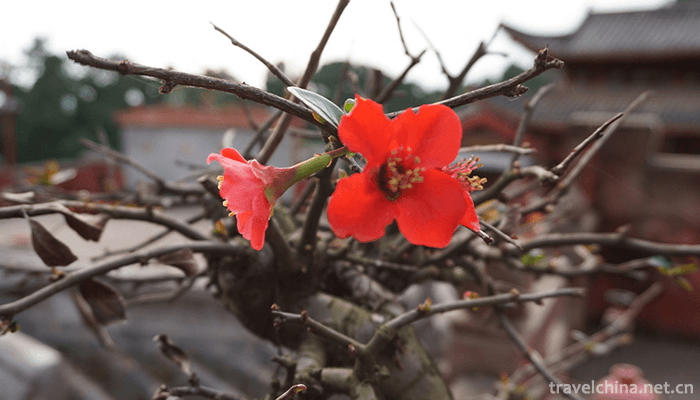
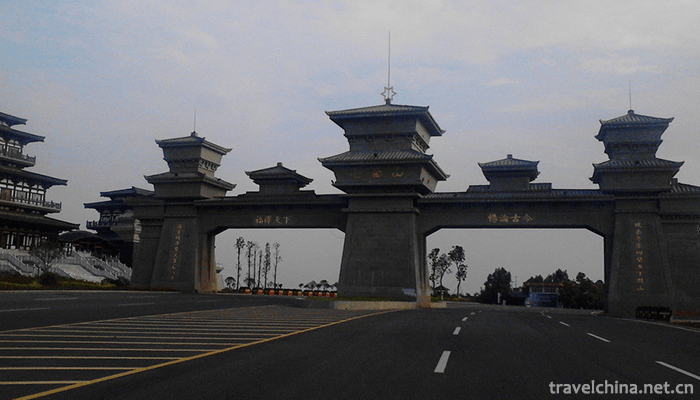
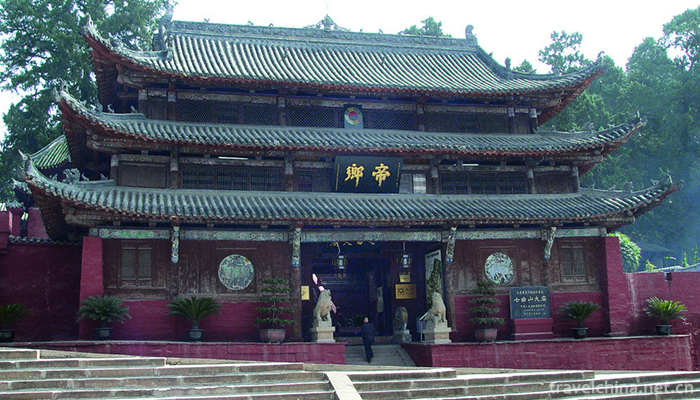
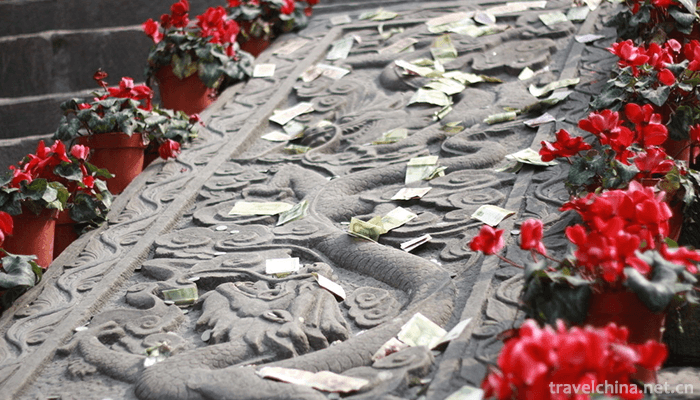

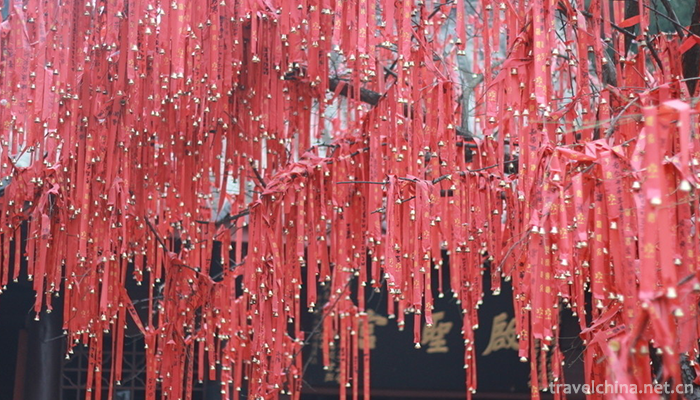
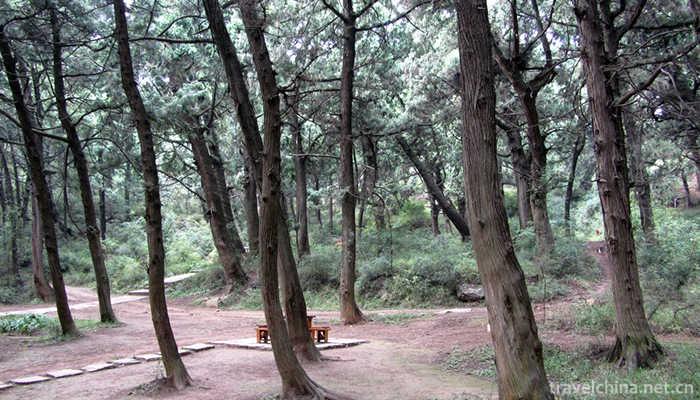
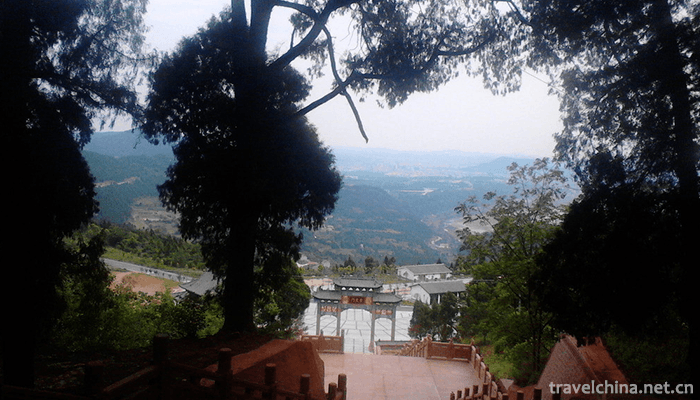
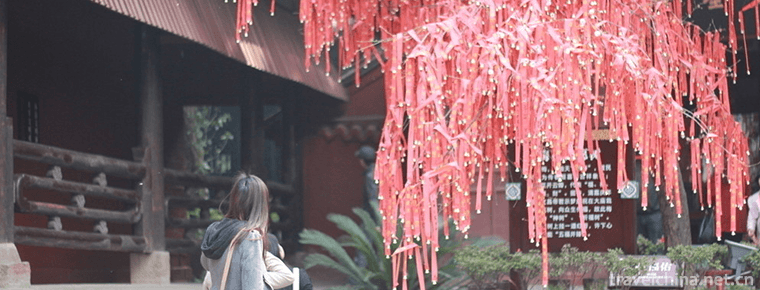
-
1.Dalian Jinshitan Scenic Area
Jinshitan is a national scenic spot, a national tourist resort, a national AAAAA scenic spot and a national geological park. It has been evaluated by CNN TV as one of the 40 most beautiful scenic spot
Time 2018-12-04 -
2.Lingwu Shuidonggou Tourist Area
Shuidonggou Ancient Human Culture Site is located in Shuidonggou Village, Linhe Town, Linwu City, Ningxia. It is 30 kilometers south of Lingwu City, 19 kilometers west of Yinchuan City
Time 2018-12-12 -
3.Yashan Huahai Stone Forest
Yashan Huahai Stone Forest Tourist Area, located in Nanling County, Wuhu City, Anhui Province, is one of the important scenic spots in Anhui's "two mountains and one lake" tourism economic c
Time 2018-12-20 -
4.Eight treasures bean curd
Babao bean skin is a delicacy. Main raw materials: bean curd 6 white sesame 25 grams pig meat 120 grams of letinous edodes.
Time 2019-03-25 -
5.Automative lighting
Car lights are also known as "teasing Momei" and "running a dry boat". It is mainly performed around the Spring Festival.
Time 2019-04-16 -
6.Lantern Festival
It is closely related to the folk custom of Lantern appreciation in China. According to textual research, lantern appreciation began in the Western Han Dynasty and flourished in the Sui and Tang Dynas
Time 2019-04-26 -
7.Longkou Fans Traditional Handicraft Production Techniques
In the late Ming and early Qing Dynasties, Zhaoyuan people created a new technique of making mungbean vermicelli, which was divided into three manual operation processes: powder pushing, powder leakin
Time 2019-05-14 -
8.Miao Silver Jewelry Forging Techniques
Miao silver jewelry forging technology takes silver as raw material. The pattern and structure of silver jewelry have been carefully designed by the craftsmen. There are 30 processes from drawing to c
Time 2019-06-05 -
9.lion dance
Lion dance, also known as "Lion Dance", "Lion Lantern", "Lion Dance", "Lion Dance", "Lion Dance", is one of the folk dances of all ethnic groups in Ch
Time 2019-06-14 -
10.Siping Opera
Siping Opera, also known as Sijuan Opera, Siping Opera, Sipeng Opera and Sipeng Opera, is popular in Pingnan County, Zhenghe County, Fujian Province. It is one of the national intangible cultural heri
Time 2019-06-16 -
11.Copper Carving Skills
Hangzhou bronze sculpture is the continuation of ancient bronze manufacture. It developed greatly in Wuyue and Southern Song Dynasty. After Tongzhi in Qing Dynasty, Hangzhou bronze sculpture represent
Time 2019-06-21 -
12.Zhangzhou Woodblock New Year Picture
Zhangzhou woodcut New Year pictures belong to folk art, which began in the Song Dynasty and flourished in the Ming and Qing Dynasties. The contents of the New Year pictures are mainly two categories:
Time 2019-07-25